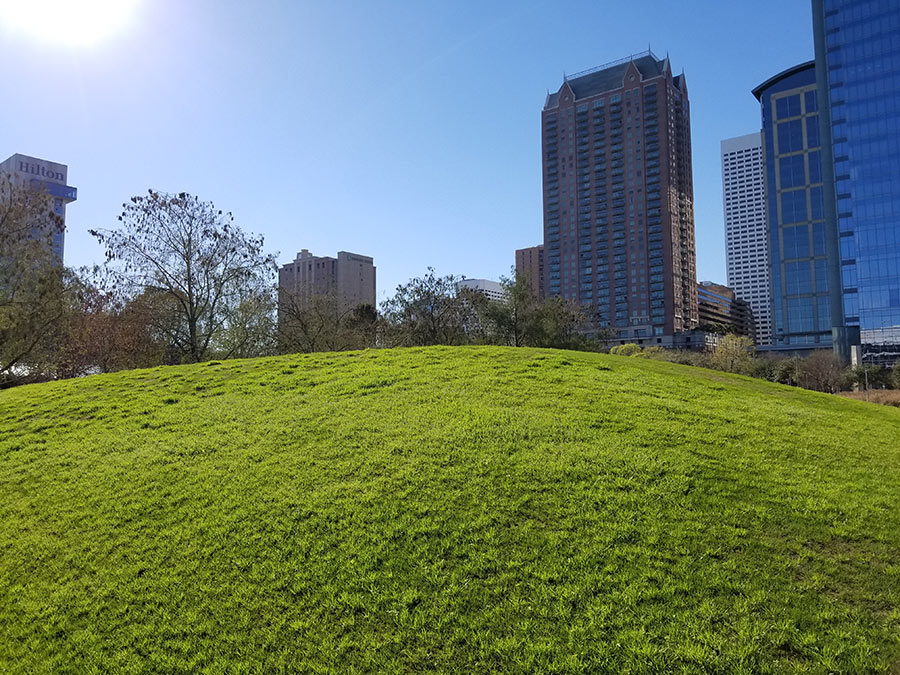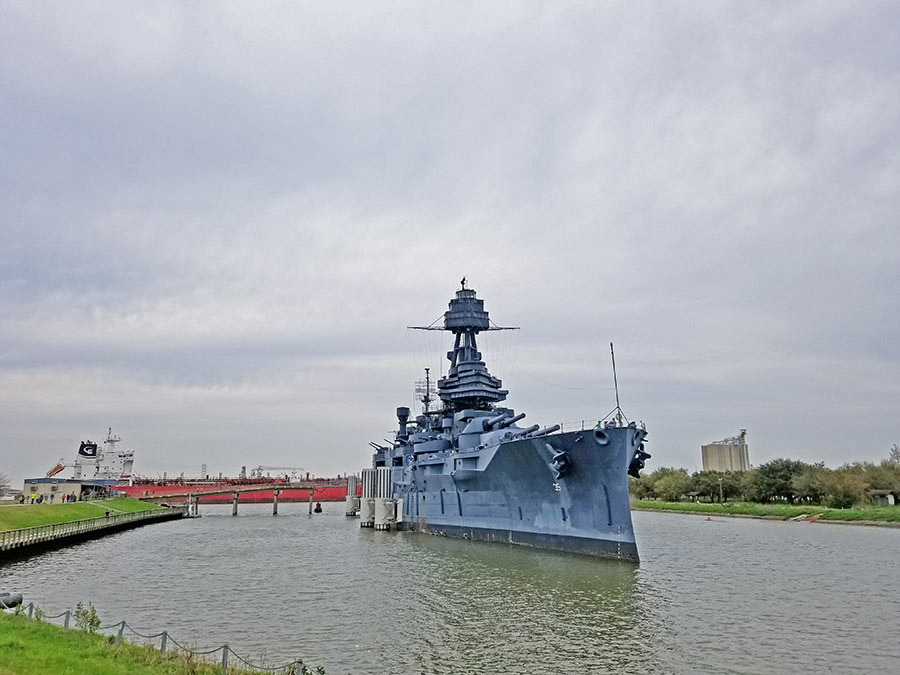
- Prospective Buyers Have Until November 14 To Bid on 21-Acre Tarkett Vinyl Flooring Plant Between Sawyer Heights Target and Studewood Kroger [Prime Property; previously on Swamplot]
- Design of New Chinese Mandarin Language Immersion Magnet School at W. Alabama and Yorktown Inspired by Chinese Character for ‘Brightness’ [Houston Business Journal]
- Prohibition SupperClub & Bar on Prairie St. To Open for ‘Mock Lunch Service’ Starting Today [Culturemap]
- Most Likely of 9 Possible Routes for Dallas-to-Houston High-Speed Rail Are BNSF Railway Right-of-Way, Along High-Voltage Electric Transmission Lines [Texas Tribune]
- Buffalo Speedway Now Closed at US-59 for as Many as 30 Days for Frontage Road Reconstruction Project [abc13; previously on Swamplot]
- Only Company ‘Deliberately Trying To Block Enforcement’ of Houston’s New Payday Lender Regulations Is Power Finance, Owned by State Rep. Gary Elkins [Houston Chronicle; previously on Swamplot]
- City Councilman Michael Kubosh Wants to Rename Hadley St., Home of Music World Entertainment, ‘Destiny’s Child Lane’ [MyFoxHouston]
- The Original Eatsie Boys Food Truck Now For Sale on Craigslist for $18,500 [Houston Chronicle]
- Despite Dumb Name, Blaffer Art Museum’s ‘Buildering: Misbehaving the City’ Is a Great Show About Urban Stunts [Glasstire]
- How Climate Change Is Fueling Miami’s Real Estate Boom [Businessweek]
Photo of East Loop at Buffalo Bayou: Russell Hancock via Swamplot Flickr Pool
Headlines





Mr. Kubosh realizes the 90s are over and Destiny’s Child isn’t a thing anymore right?
No matter what route gets the nod, for-profit HSR for the primary sake of connecting the two cities must not take precedence over Houston’s regional commuter rail needs that only a non-profit, elected body (e.g., local government) is qualified to elucidate. Citizens with dutiful concern for implementation of mass transit in the interest of the Houston community must insist that the bullet train route take a path and implement stations along a route that optimally impacts commuter rail needs for this area.
While both currently leading proposals for the bullet train’s path utilizes a US-290 approach into downtown, the clearest, most immediate need is to connect the Woodlands and IAH with downtown and link into Metro’s light rail network. Dallas is planning this strategy and Houston ought to as well.
If the Hwy 290 proposal and a worship of this project win out simply because it’s a non-gov’t entity that’s spearheading and HSR is not routed along an I-45 corridor instead, this region misses out on a crucial opportunity to address long pent-up commuter rail demand for Montgomery County and IAH travelers.
let’s all take a moment to thank jersey village for electing such high class money grubbing worthless politicians. this one goes to you Elkins.
***
and the idea of a “destiny’s child lane” just made me throw up in my mouth.
alright, I admittedly typed that before checking his voting record assuming the worst and yes indeed, this guy is a slimeball.
http://votesmart.org/candidate/key-votes/5502/gary-elkins#.VEfYD0GKLgU
Miami? I thought this was a Houston real estate blog?
Commuter rail is superfluous to Houston’s highly effective P&R and HOV/HOT system. Airport-to-downtown routes in similar cities (serving mostly non-residents, who don’t pay many taxes) have notoriously low rates of ridership by comparison with similar intraurban routes (serving residents, who pay most of the taxes). METRO is highly debt-burdened already, so any investment toward commuter rail represents a dis-investment from existing services. And moreover, getting Union Pacific or BNSF to agree to share its already-congested freight tracks is very unlikely.
Its long-term prospects are also very poor. On the transit demand side, an increasing share of employment is being created outside of the urban core in places that can only be served by a decentralized transit model. On the transit supply side, all it would take to significantly reduce congestion is to put a significant portion of commuters into self-driven cars and public or private ridesharing services. In that scenario, capital-intensive fixed-route transit is subject to a high risk of functional and economic obsolescence.
The pro-commuter-rail argument is over, its done, its demolished. Its fruitless to pretend otherwise.
@tony Unfortunately, this is an example of politics being the art of the possible. TCR will get priority over regional rail, simply because they have clearer paths toward funding, and fewer difficulties securing right-of-way (astonishingly) than METRO or a hypothetical multi-county agency would.
Any rail improvements in the region are better than no rail at all. A critical mass of riders on the bullet trains might be what it takes to generate enough political will to get a comprehensive commuter plan put into place.
Just looked at Elkins’ record. What a steaming turd, this guy should be nowhere near an elected office.
tony,
“regional commuter rail needs that only a non-profit, elected body (e.g., local government) is qualified to elucidate.”
Why would you believe that?
God forbid some private entity put up a route where it was most valued by the people who would actually use it.
How does placing one route exclude the placing of further routes?
@tony: The same train can’t do both things well. Commuter rail is great, and should be developed as soon as Houston’s public transit system can handle it. The Dallas bullet train is entirely unrelated. The trains coming from Dallas will be full of people already. They won’t be getting off to make room for commuters.
Destiny’s Child Lane?!?! It’s not April 1st is it???
According to TCR, they’re not using any public funds, so they will put their route wherever they feel maximizes their financial performance and where they can secure access, mostly through private agreements with the owners of the right of way. The government has no business telling them that they need to modify their plans to accommodate commuter rail, unless they’re bringing a big pot of money (and not too many strings) to the table.
NIche is correct, the HOV/HOT/Park&Ride system can provide superior service to commuter rail – leaves every 5-10 minutes, can travel at high speeds most of the way (provided the HOT/HOV lanes are kept uncongested), and takes you close to your building without having to change vehicles. Unless we’re going to fully grade-separate commuter rail to and through downtown and other activity centers (huge $$$), I don’t see why it would be preferable to the user.
IMO, though, the best thing about the HSR route proposals is that they all lend themselves to a reconstruction of the Southern Pacific Grand Central Station northwest of downtown. This is an opportunity to create a true signature gateway to the city, better than other attempts have been.